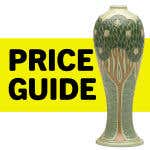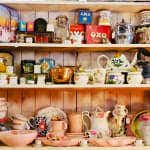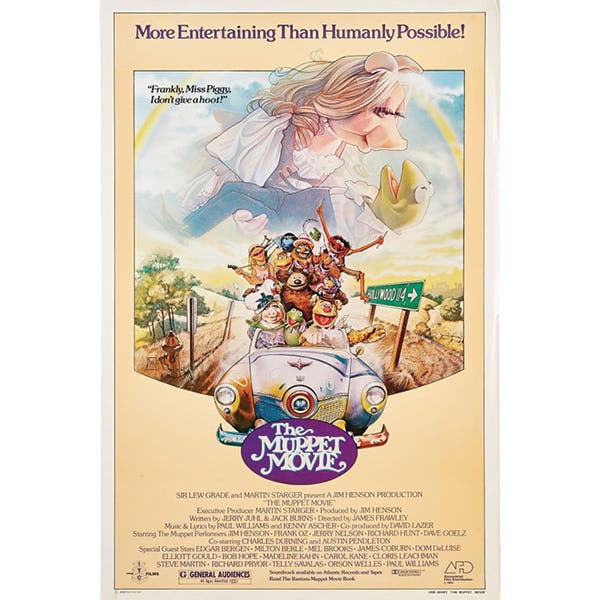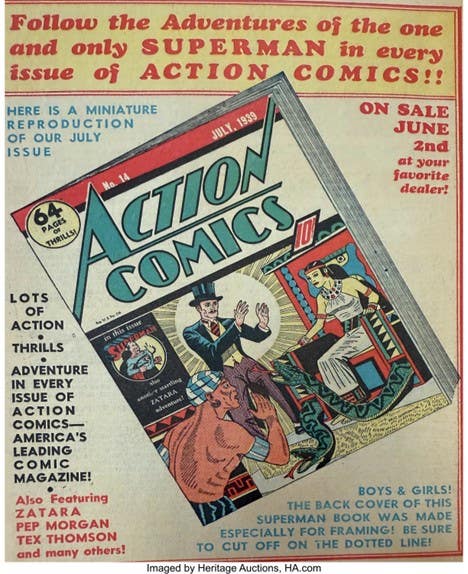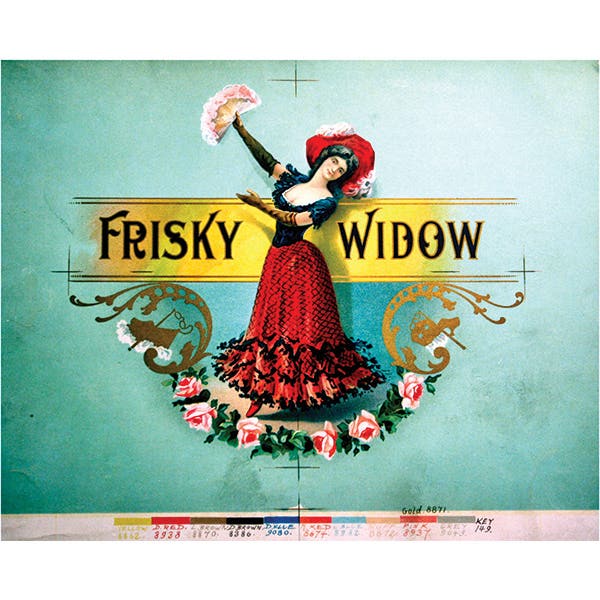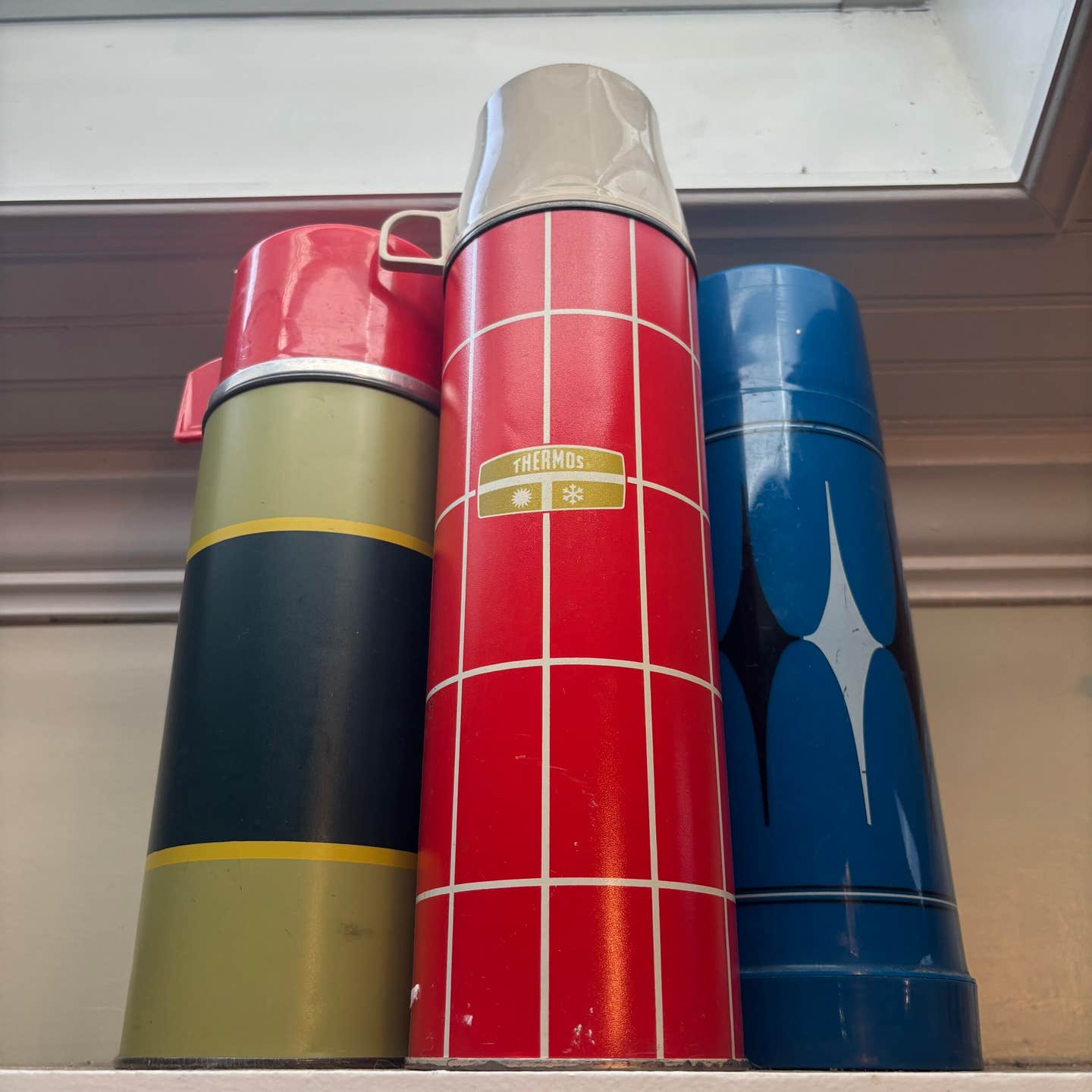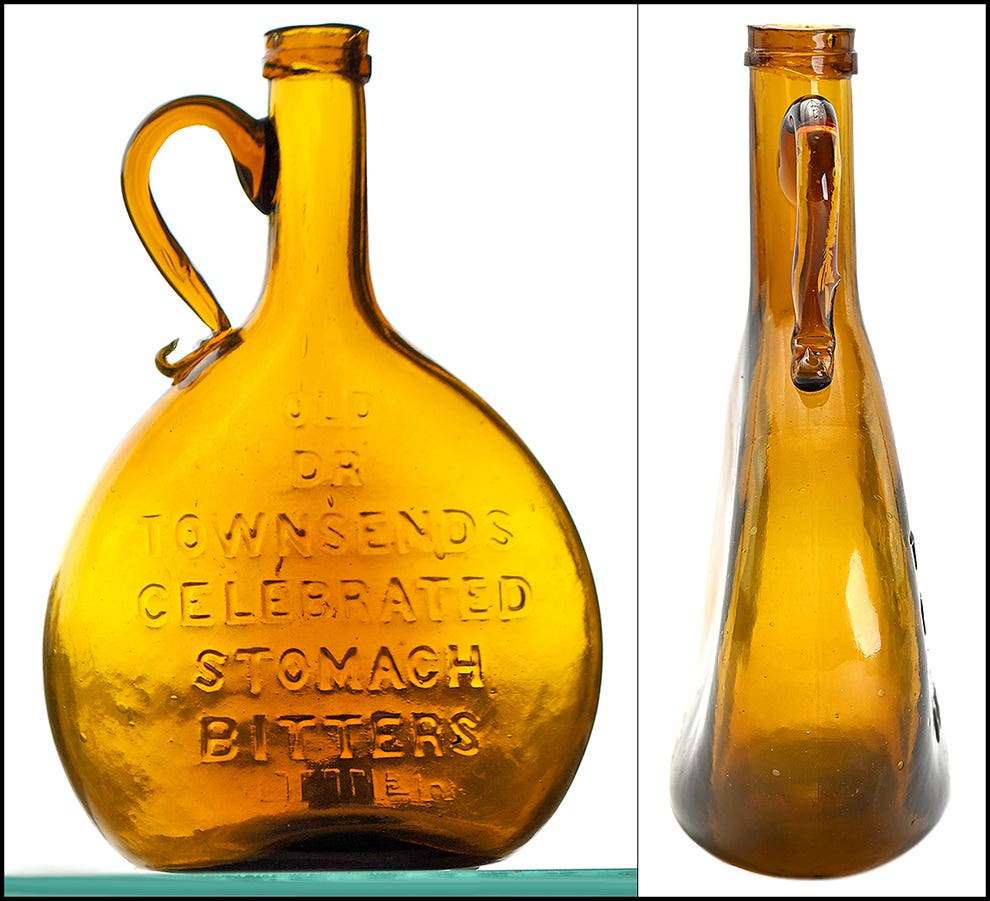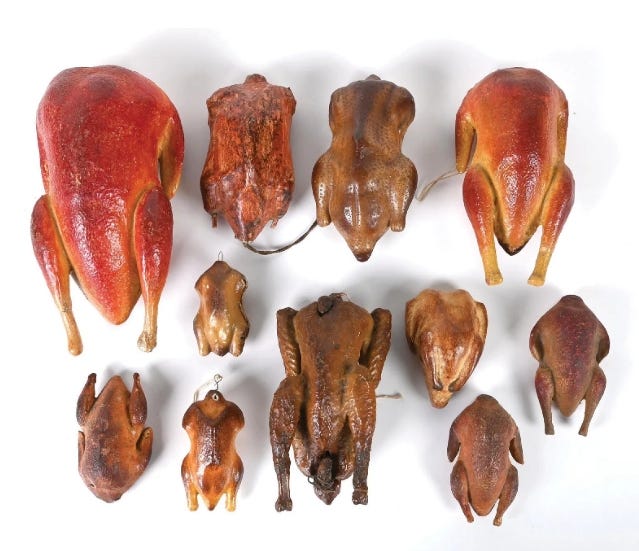Alphabet of the Afterlife: The Spell of the Spirit Board
Vintage spirit boards are fascinating conversation pieces that open a portal to the past.
One summer night during a sleepover in my friend’s tent, four of us sat around an Ouija board illuminated by a flashlight and tried to contact the Wright brothers.
To this day, I have no idea what possessed me to suggest Orville and Wilbur Wright, and my friends were just as perplexed, but shortly after we asked them to send us a sign, we heard an airplane. We all ran out of the tent and looked up in amazement at the jet flying overhead, watching until we could no longer see its lights.
As an adult, I know this was just a funny coincidence, but for four junior high kids, it was thrilling to believe we had contacted the famous aviation duo through an Ouija board.
13 in. x 19 in. Even with a missing planchette, it sold for $1,200, four times the high estimate, in 2025.
Image courtesy Freedom Auction Company by LiveAuctioneers.
Ouijas and other talking boards, also known as mystic, spirit, and witch boards, emerged during the 19th century and were a source of harmless entertainment for most of their history. While they still are, talking boards eventually gained the reputation as tools for evil, thanks to real-life stories and horror movies centering around boards doing bad things, and they now generate fear in many.
They don’t scare dedicated collectors, though, who happily acquire antique and vintage boards for their history, whimsical designs, and as fascinating conversation pieces.
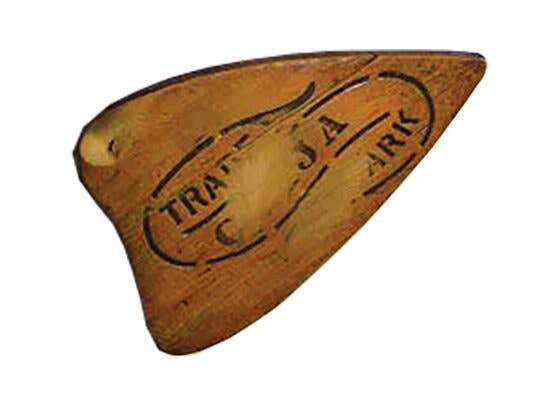
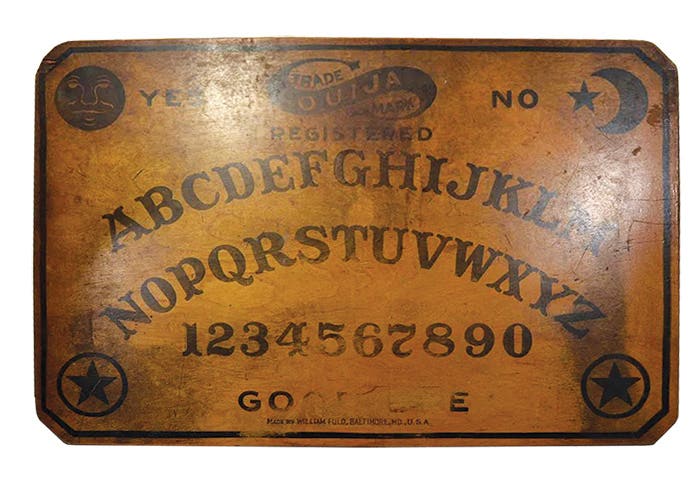
Roots in Spiritualism
Talking boards stemmed from American Spiritualism, a religious and social movement whose supporters believed it was possible to communicate with the spirits of the dead. According to History.com, the movement’s beginning is linked to an 1848 incident involving young sisters Kate and Maggie Fox, who claimed they could communicate with a spirit through mysterious knockings.
The sisters’ story caused such a sensation that spiritualism soon spread across the country, and other people also tried communicating with spirits through séances. After the Civil War, Spiritualism offered comfort in an era when life spans were much shorter, and attracted droves of believers who were desperate to connect with loved ones who lost their lives in battle.
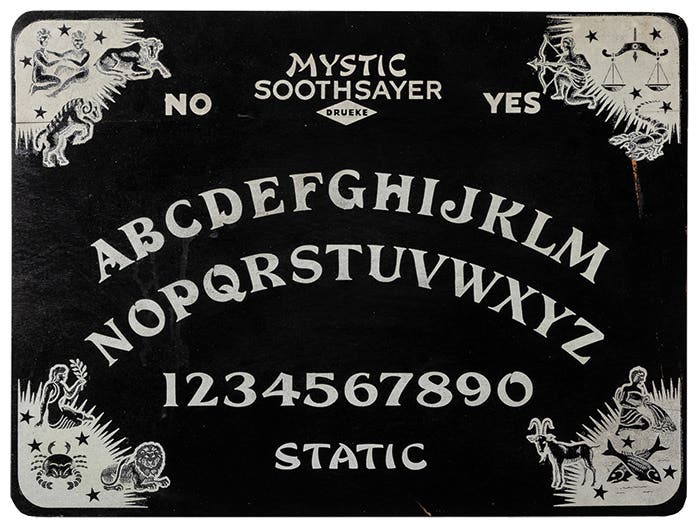
15 in. x 20 in. This black and white screen-printed wooden board with astrological symbols had original glow-in-the-dark paint. It brought $660 in 2025. Image courtesy of Potter & Potter Auctions.
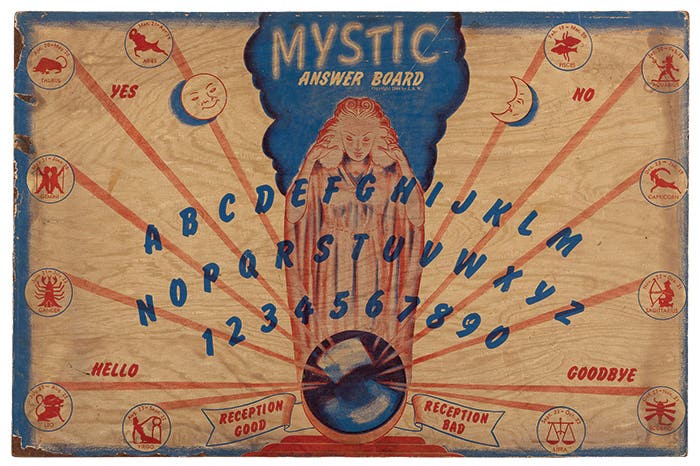
Another fad was table-turning parties, which involved participants placing their hands on a table while someone called out the letters of the alphabet to spell messages. When the correct letters were said, the table would start shaking, with everyone swearing that they weren’t the ones moving it.
This method eventually became too tedious, and people wanted faster ways to communicate with spirits. Several entrepreneurs took note, developing mysterious boards that could “talk.” The most famous and successful is the Ouija board, which once outsold Monopoly.
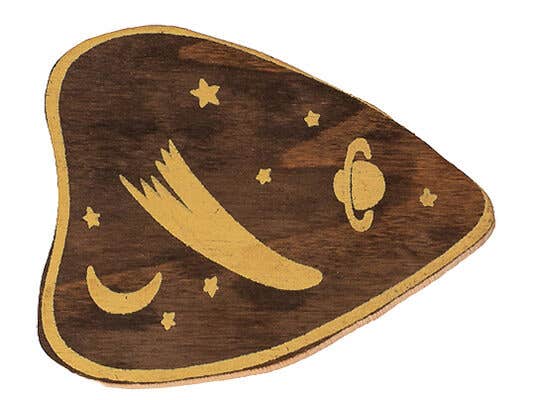
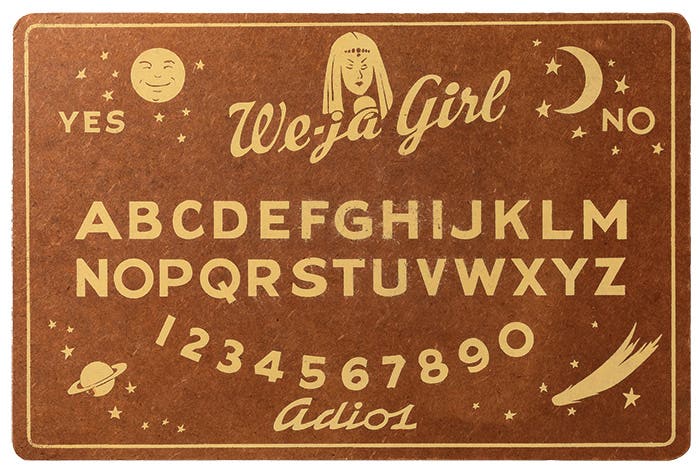
$406 in 2025. Image courtesy of Potter & Potter Auctions.
Spelling Out the Ouija Board’s History
Though they come in different designs, talking boards are flat boards made of wood or plastic with the alphabet, numbers zero through nine, and “No,” “Yes,” “Goodbye,” or variations thereof printed on them. They also have a planchette, a small heart—or teardrop-shaped device that maneuvers around the board and facilitates communication with the deceased.
Two or more people use boards by placing their fingertips lightly on the planchette, asking questions, and watching, bewildered, as the planchette glides to specific letters, spelling out answers seemingly of its own will.
Scientists say they work by taking advantage of a psychological and physiological phenomenon called the ideomotor effect, which happens when we move an object without meaning to. To our conscious mind, it seems like the object moves by itself, creating a convincing illusion.
Image courtesy of Potter & Potter Auctions.
The Ouija board stemmed from newspaper reports in 1886 about a new phenomenon taking over Spiritualists’ camps in Ohio, of people using a board with letters, numbers, and a device to point to them.
Charles Kennard saw a business opportunity and, in 1890, founded Kennard Novelty Company of Baltimore, Maryland, with other investors, including lawyer Elijah Bond, surveyor Washington Bowie, and businessman and inventor William Fuld, to start manufacturing talking boards.
According to Ouija historian Robert Murch, the board’s name came about after Bond’s sister-in-law, Helen Peters, a successful medium, asked what it wanted to be called. The board spelled out “O-U-I-J-A,” which means good luck.
Lore also has it that Bond, with the help of Peters, was only awarded a patent for it after the Ouija correctly spelled the last name of the chief patent officer, which was unknown to them.
Marketed as an amusing and wholesome parlor game and oracle device, the Ouija board was wildly successful.
In 1892, Kennard Novelty was reorganized as the Ouija Novelty Company and run by Fuld. The company thrived under his leadership, and Ouija boards continued to soar in popularity through most of the 20th century. Sales notably surged after World Wars I and II and during the Vietnam War, as people wanted to try to connect with loved ones.
Many other companies offered interesting versions of talking boards featuring an array of colorful imagery, including Egyptian sphinxes, fortune tellers, and witches, but none outdid Fuld’s Ouijas.
Eerily, Fuld died in 1927 after falling from the roof of his new three-story factory, which he claimed the Ouija board told him to build, according to Baltimore Magazine.
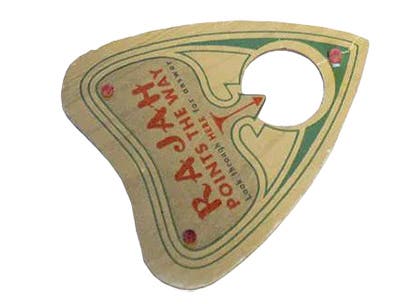
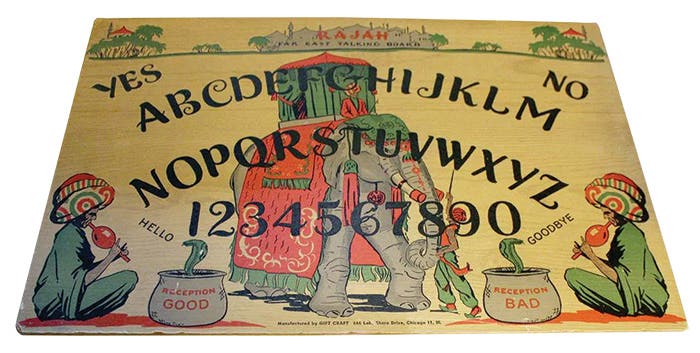
This fetched $300 in 2023. Image courtesy of Soulis Auctions by LiveAuctioneers.
Parker Brothers purchased the rights to the Ouija board in 1966 and sold two million the following year, surpassing Monopoly. Hasbro acquired Parker Brothers in 1991 and still manufactures the board.
While it always had detractors, the Ouija board was seen as harmless haunting fun for most of its history until 1973, when The Exorcist scared the pants off moviegoers everywhere. The adaptation of William Blatty’s 1971 novel, reportedly based on a true story, sees the 12-year-old Regan playing with an Ouija board by herself and becoming possessed by a demon.
Almost overnight, Ouija boards were seen as a device of the devil, and their popularity dwindled. Over the decades, however, they have maintained their spooky reputation in pop culture through books, movies, and TV shows.
Collecting Talking Boards
Regardless of how you feel about them, for more than 135 years, Ouijas and other talking boards have been intriguing objects and are still meaningful devices to many people. Others continue to view them as fun and edgy.
Collectors are also charmed by these mysterious relics and have a wide variety of antique and vintage examples to choose from on the secondary market.
Values are based on age, craftsmanship, condition, manufacturer, material (wood is preferred), and rarity. Boards with original planchettes and boxes can also have higher value, but ones with neither may still be worth acquiring as a decorative piece. Planchettes can also be collectible on their own.
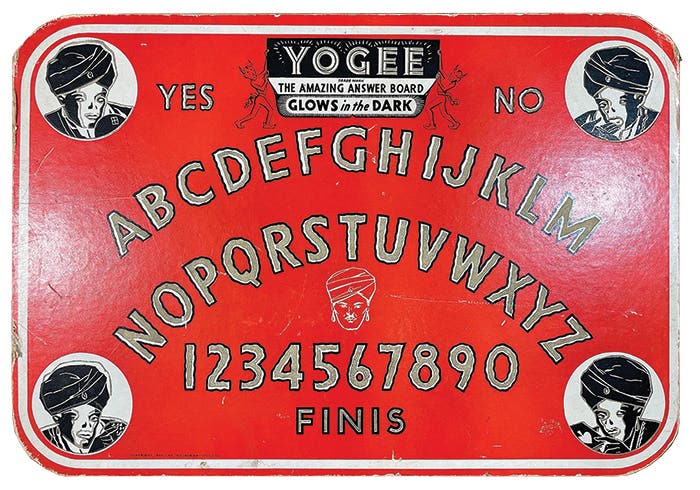
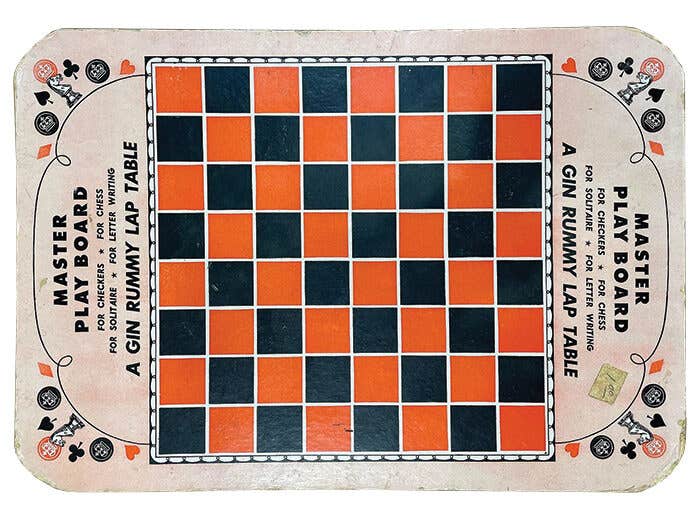
While many vintage boards can be found for $50 and under, there are others that collectors are willing to pay thousands for. Ouija boards made by Kennard Novelty in the late 19th century and Fuld’s Ouija Novelty Company in the early 20th century are among the most valuable and coveted. Recent auction results have shown that these examples are in the $500 to $3,000 range. Other antique and vintage boards can sell between $100 and $500, especially those with unique graphics or colors.
While many see talking boards as scary, collectors embrace them for their history and artistry and as a reminder of a time when they were viewed as a source of comfort and harmless thrills.
To delve deeper into the history and mystery of talking boards, helpful websites include robertmurch.com, museumoftalkingboards.com, mysteriousplanchette.com, tbhs.org (Talking Board Historical Society), and williamfuld.com.
To connect with other collectors and enthusiasts, check out the public Facebook group, Ouija Board Collectors & Fans.
